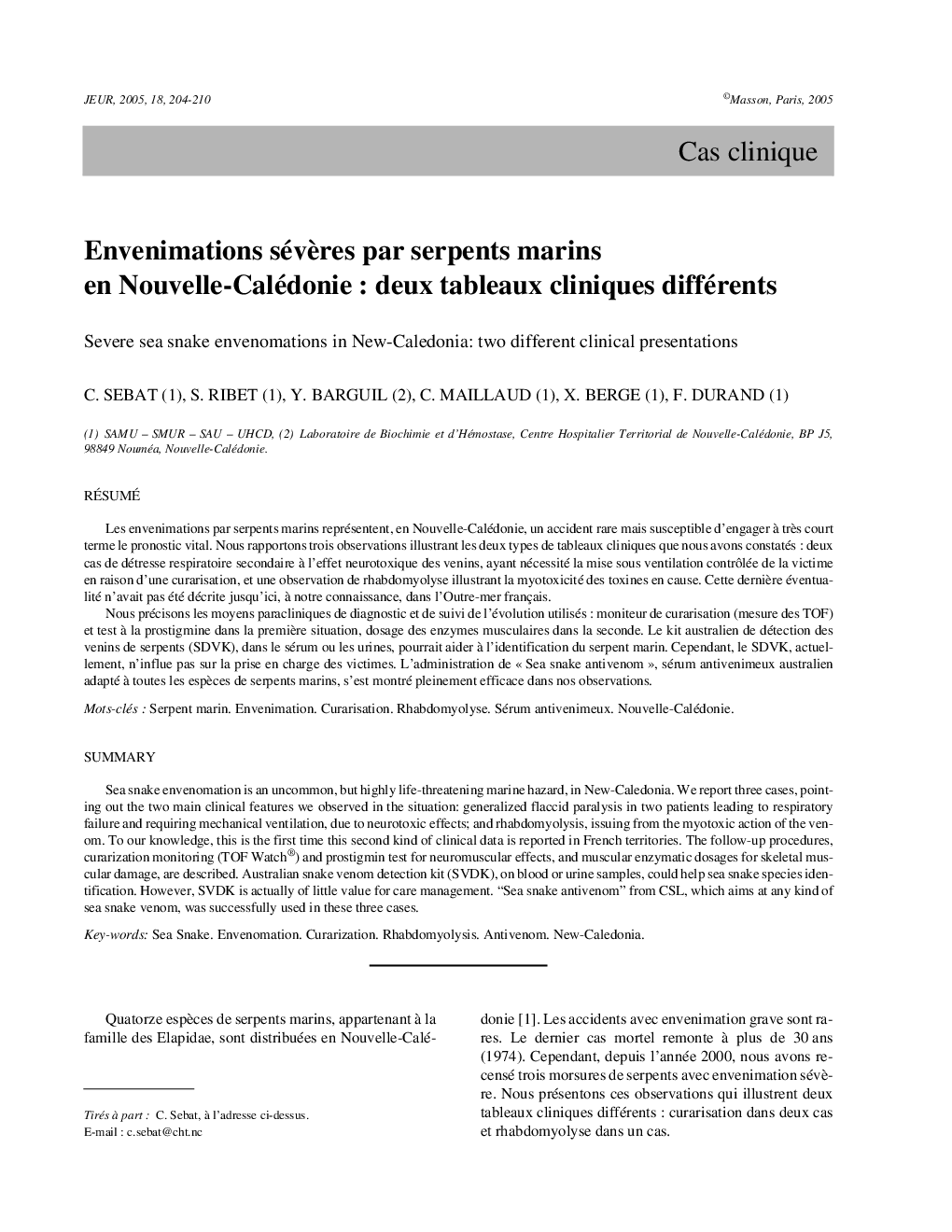| Article ID | Journal | Published Year | Pages | File Type |
|---|---|---|---|---|
| 9098145 | Journal Européen des Urgences | 2005 | 7 Pages |
Abstract
Sea snake envenomation is an uncommon, but highly life-threatening marine hazard, in New-Caledonia. We report three cases, pointing out the two main clinical features we observed in the situation: generalized flaccid paralysis in two patients leading to respiratory failure and requiring mechanical ventilation, due to neurotoxic effects; and rhabdomyolysis, issuing from the myotoxic action of the venom. To our knowledge, this is the first time this second kind of clinical data is reported in French territories. The follow-up procedures, curarization monitoring (TOF Watch®) and prostigmin test for neuromuscular effects, and muscular enzymatic dosages for skeletal muscular damage, are described. Australian snake venom detection kit (SVDK), on blood or urine samples, could help sea snake species identification. However, SVDK is actually of little value for care management. “Sea snake antivenom” from CSL, which aims at any kind of sea snake venom, was successfully used in these three cases.
Keywords
Related Topics
Health Sciences
Medicine and Dentistry
Anesthesiology and Pain Medicine
Authors
C. Sebat, S. Ribet, Y. Barguil, C. Maillaud, X. Berge, F. Durand,
